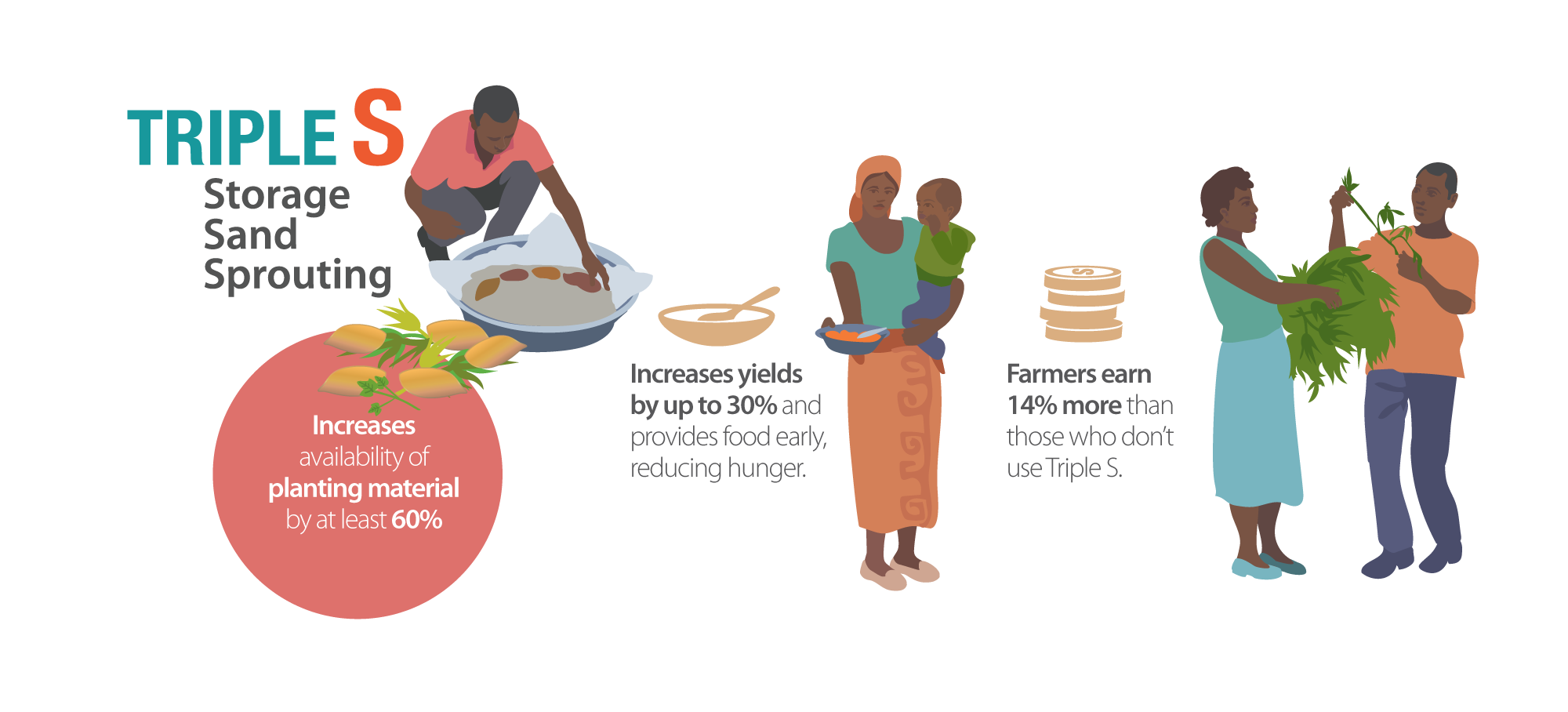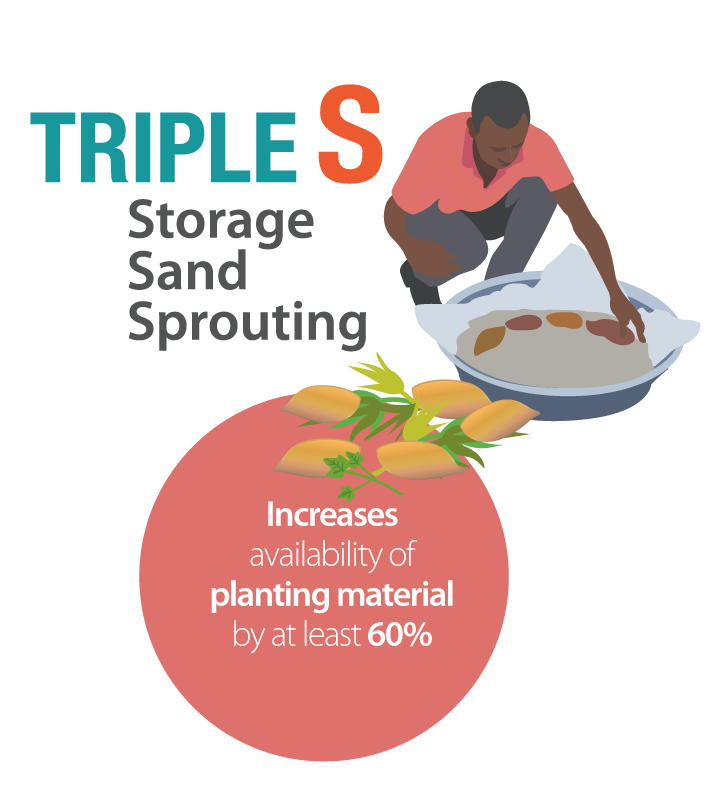
Triple advantage
Climate-smart approach boosts farmer incomes by 14%
Like other farmers in Ethiopia’s Southern Nations, Nationalities and Peoples Region (SNNPR), Worke Kuchuta stopped growing sweetpotato years ago after a prolonged drought made it impossible to find planting material in time for seasonal rains.
It’s a common challenge in Africa, one that prevents many families from growing pro-vitamin A, orange-fleshed sweetpotato. But thanks to a simple innovation that enables her to produce quality planting material in a timely manner, Kuchuta and her family are now enjoying sweetpotato’s nutritional benefits again.
Dealing with drought
Shortages of sweetpotato vines at the start of the rainy season force many farmers to plant late, or use low quality planting material, which result in late harvests and low yields. As climate change alters rainfall patterns, this is becoming increasingly problematic.
To address this challenge, the International Potato Center (CIP) and partners have promoted a system to store sweetpotatoes in sand during the dry months, plant them in seedbeds six weeks before the rainy season begins, and water them so that they sprout vines for planting once the rains resume. Dubbed Triple S (for storage in sand and sprouting) this appropriate technology allows farmers to start harvesting early in the year – when food is scarce and market prices are high – and increases the number of months families have sweetpotatoes to eat. Just 100 sweetpotatoes will sprout enough vines to plant in a quarter hectare, which can produce enough nutritious food to meet a family’s annual vitamin A needs.
“My six children enjoy orange-fleshed sweetpotato very much,” said Kuchuta, who explained that sweetpotato leaves and vines also serve as fodder for their cows in the dry season. In 2019, Kuchuta and her husband, Bezabih Hamamo, not only grew enough orange-fleshed sweetpotatoes to feed the family, they also sold a small surplus at a local market for USD 255, and sold vine cuttings to other farmers for additional income.
They are hardly an exception. One study found that farmers who use Triple-S earn 14% more than those who use traditional methods, which means it alleviates the financial burden of households that struggle to meet basic needs.
Taking an innovation to scale
Kuchuta and Hamamo are among the thousands of farmers in the SNNPR who are now producing their own planting material and growing orange-fleshed sweetpotato again. They are also showing other farmers how to implement Triple S, as they are among the hundreds of ‘trainers’ – farmers and government extension agents – who learned to teach their neighbors Triple S and good farming practices as a result of a gender-responsive initiative to take the innovation to scale. Supported by the CGIAR Research Program on Roots, Tubers and Bananas, the initiative used a combination of videos, printed materials, and demonstrations to teach nearly 14,000 Ethiopian farmers to use Triple S in 2018-19. In the process, it developed a methodology that can be used to take Triple S to scale elsewhere in the future.
The Triple-S scaling initiative also benefited farmers in northern Ghana, where CIP partnered with NGOs and the Ministry of Food and Agriculture to train approximately 37,000 farmers – 60 percent of them women – and show demonstration videos to another 43,000. By the end of 2019, instructors at five Ghanaian agricultural colleges had received training on Triple S, and approximately 500 trainers in Ethiopia and Ghana were ready to teach people the approach for years to come.
Triple-S – a fairly simple idea – demonstrates the power of an innovation and an effective approach for taking it to scale. With its eye squarely focused on the needs of poor farming families, CIP will continue to develop and disseminate such technologies and practices to improve nutrition, food systems and lives.
Funders: African Development Bank; Bill & Melinda Gates Foundation; European Union; Helen Keller International; United Kingdom Natural Resources Institute, United States Agency for International Development.
Partners: CIRAD – Agricultural Research for Development; Adongo Agricultural College, Ghana; Digital Green, Ethiopia; Ghana Ministry of Food and Agriculture; Innovations for Sustainable Rural Development, Ghana; Integrated Water and Agricultural Development, Ghana; Mennonite Economic Development Association; People in Need; Savanna Agricultural Research Institute, Ghana; South Agriculture Research Institute, Ethiopia; Southern Nations, Nationalities, and Peoples’ Region Bureau of Agriculture and Natural Resource Development; Partnership for Rural Development Action, Ghana; Tumu Deanery Rural Integrated Development Programmer, Ghana; Sodo ATVET College, Ethiopia.
Associated CGIAR Research Program: Roots, Tubers and Bananas.




